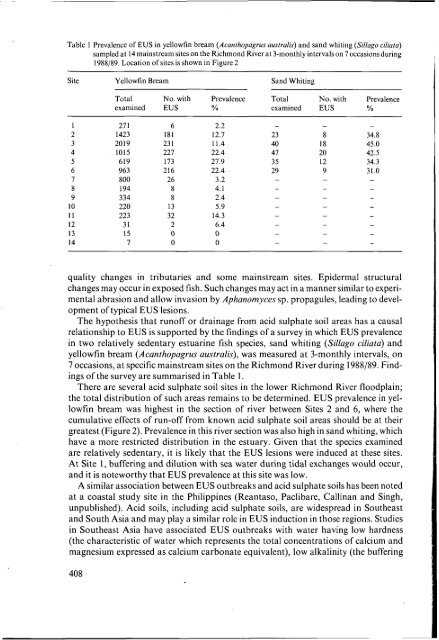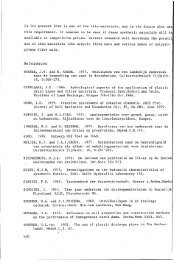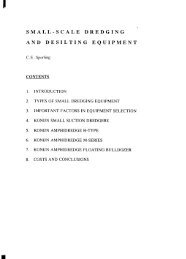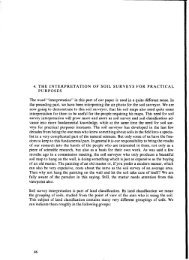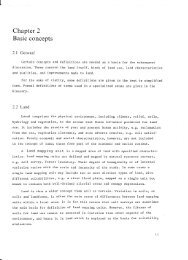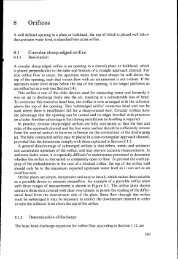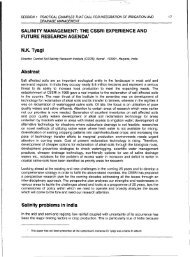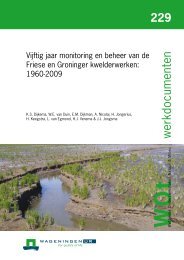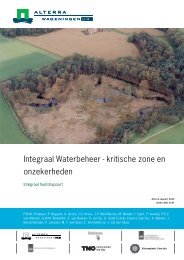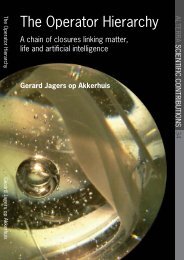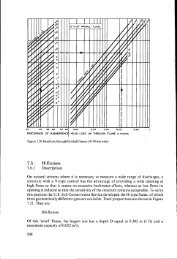Environmental aspects of acid sulphate soils - ROOT of content
Environmental aspects of acid sulphate soils - ROOT of content
Environmental aspects of acid sulphate soils - ROOT of content
You also want an ePaper? Increase the reach of your titles
YUMPU automatically turns print PDFs into web optimized ePapers that Google loves.
Table 1 Prevalence <strong>of</strong> EUS in yellowfin bream (Acanthopagrus uusrrulis) and sand whiting (SiNago ciliuia)sampled at 14 mainstream sites on the Richmond River at 3-monthly intervals on 7 occasions during1988j89. Location <strong>of</strong> sites is shown in Figure 2Site Yellowfin Bream Sand WhitingTotal No. with Prevalence Total No. with Prevalenceexamined EUS % examined EUS Yo12345678910II12131427 114232019101561996380019433422022331157618123 I227I73216268813322OO2.212.711.422.427.922.43.24.12.45.914.36.4OO-34.845.042.534.331.0-------quality changes in tributaries and some mainstream sites. Epidermal structuralchanges may occur in exposed fish. Such changes may act in a manner similar to experimentalabrasion and allow invasion by Aphanomyces sp. propagules, leading to development<strong>of</strong> typical EUS lesions.The hypothesis that run<strong>of</strong>f or drainage from <strong>acid</strong> <strong>sulphate</strong> soil areas has a causalrelationship to EUS is supported by the findings <strong>of</strong> a survey in which EUS prevalencein two relatively sedentary estuarine fish species, sand whiting (Silfugo ciliata) andyellowfin bream (Acanthopagrus australis), was measured at 3-monthly intervals, on7 occasions, at specific mainstream sites on the Richmond River during 1988/89. Findings<strong>of</strong> the survey are summarised in Table 1.There are several <strong>acid</strong> <strong>sulphate</strong> soil sites in the lower Richmond River floodplain;the total distribution <strong>of</strong> such areas remains to be determined. EUS prevalence in yellowfinbream was highest in the section <strong>of</strong> river between Sites 2 and 6, where thecumulative effects <strong>of</strong> run-<strong>of</strong>f from known <strong>acid</strong> <strong>sulphate</strong> soil areas should be at theirgreatest (Figure 2). Prevalence in this river section was also high in sand whiting, whichhave a more restricted distribution in the estuary. Given that the species examinedare relatively sedentary, it is likely that the EUS lesions were induced at these sites.At Site 1, buffering and dilution with sea water during tidal exchanges would occur,and it is noteworthy that EUS prevalence at this site was low.A similar association between EUS outbreaks and <strong>acid</strong> <strong>sulphate</strong> <strong>soils</strong> has been notedat a coastal study site in the Philippines (Reantaso, Paclibare, Callinan and Singh,unpublished). Acid <strong>soils</strong>, including <strong>acid</strong> <strong>sulphate</strong> <strong>soils</strong>, are widespread in Southeastand South Asia and may play a similar role in EUS induction in those regions. Studiesin Southeast Asia have associated EUS outbreaks with water having low hardness(the characteristic <strong>of</strong> water which represents the total concentrations <strong>of</strong> calcium andmagnesium expressed as calcium carbonate equivalent), low alkalinity (the buffering408


